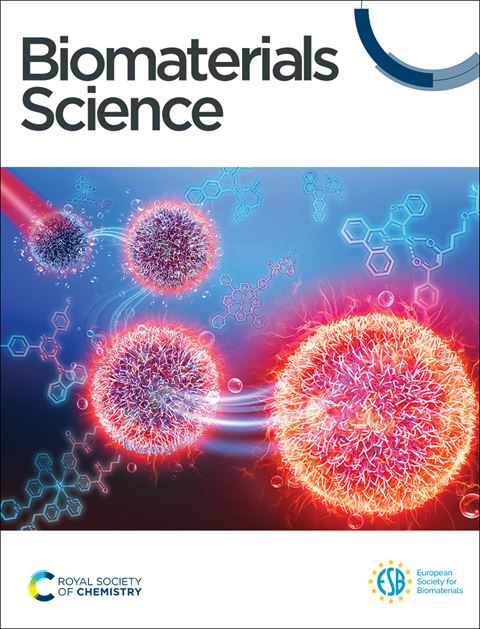评价可持续合成PLGA纳米颗粒的绿色溶剂。
IF 5.8
3区 医学
Q1 MATERIALS SCIENCE, BIOMATERIALS
引用次数: 0
摘要
我们报道了使用可持续的绿色溶剂合成聚乳酸-羟基乙酸(PLGA)纳米颗粒(NPs),作为传统石油基危险溶剂的安全替代品。所得的NP稳定,具有与传统溶剂合成的NP相当的物理化学性质和细胞摄取,突出了绿色溶剂合成NP的潜力。本文章由计算机程序翻译,如有差异,请以英文原文为准。

Evaluating green solvents for sustainable PLGA nanoparticle synthesis†
We report the synthesis of poly(lactic-co-glycolic acid) (PLGA) nanoparticles (NPs) using sustainable green solvents as safer alternatives to traditional petroleum-based, hazardous solvents. The resulting NPs are stable and exhibit comparable physicochemical properties and cellular uptake to those synthesized with traditional solvents, highlighting the potential of green solvents for NP synthesis.
求助全文
通过发布文献求助,成功后即可免费获取论文全文。
去求助
来源期刊

Biomaterials Science
MATERIALS SCIENCE, BIOMATERIALS-
CiteScore
11.50
自引率
4.50%
发文量
556
期刊介绍:
Biomaterials Science is an international high impact journal exploring the science of biomaterials and their translation towards clinical use. Its scope encompasses new concepts in biomaterials design, studies into the interaction of biomaterials with the body, and the use of materials to answer fundamental biological questions.
 求助内容:
求助内容: 应助结果提醒方式:
应助结果提醒方式:


